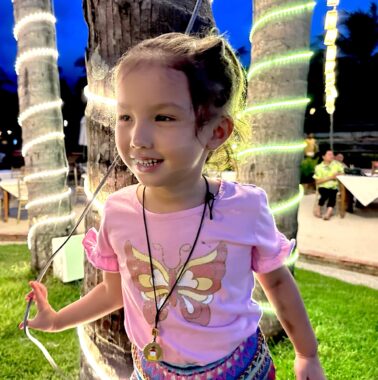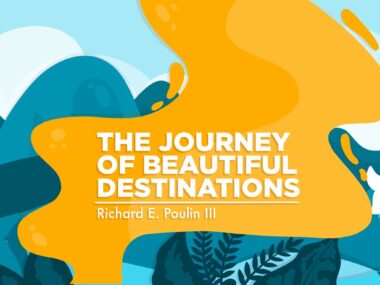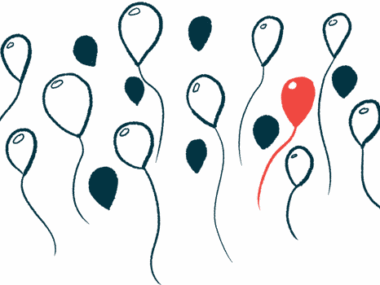The importance of awareness days in the rare disease community
How this month's recognition of AADC deficiency supports families and care
Written by |

My wife, Judy, and I recently attended our third awareness day event for aromatic l-amino acid decarboxylase (AADC) deficiency. This year’s annual event, on Oct. 23, was a live video event on Facebook that showcased even more families, including our daughter, Rylae-Ann, who has the condition. It also discussed the advancements made in gene therapy and how ClearPoint Neuro is investigating advanced technology that could improve innovative treatments.
AADC Deficiency Awareness Day was established in 2020 by the AADC Family Network. The annual event is recognized by five U.S. states, thanks to the passage of bipartisan resolution. Creating an awareness day is extremely important for all rare diseases, including AADC deficiency. Despite a low identified population, this ultrarare disease has garnered the attention of a prime minister, major news outlets, and much more. That’s the power of our awareness day.

Rylae-Ann celebrating AADC Deficiency Awareness Day on Oct. 23. (Courtesy of Richard E. Poulin III)
Rare diseases, or orphan diseases, affect a relatively small number of people, but more than 7,000 of them collectively affect millions worldwide. Recognizing the significance of rare diseases by creating awareness days dedicated to each specific one is critical.
Rare diseases often go unnoticed because of their low incidence rates. As a result, many healthcare professionals may lack knowledge about these conditions.
We had to travel internationally or use teleconferencing to meet doctors who knew about AADC deficiency. An awareness day brings attention to this problem and spreads information to a larger audience, from the general population to medical personnel.
Advocacy and patient support
When we discovered Rylae-Ann had AADC deficiency, there was little support or guidance on the disease available to us. Thanks in part to AADC Deficiency Awareness Day events, that’s changed as patient resources have been added.
Raising awareness about rare diseases overall has led to increased advocacy and family support. Having awareness days for all rare diseases can pave the way for more research, funding, and cures. We hope to see the establishment of more patient organizations and support groups, which could provide much-needed guidance and assistance.
Helping early diagnosis and treatment
We discovered our daughter had AADC deficiency by chance when she was 8 months old. Unfortunately, many in the rare disease community go undiagnosed for years.
Awareness days educate healthcare professionals about rare diseases and their symptoms, which can lead to earlier and more accurate diagnoses. We went through several misdiagnoses, which delayed the support we could provide our daughter. For many, this mislabeling results in the administration of incorrect medication. Timely diagnosis is key to effective treatment and improved outcomes for all of us.
Encouraging research, funding, and families
With increased awareness comes more interest in funding and researching. Many rare diseases don’t have the money to instigate research that can lead to treatment options.
For our disease, the awareness day highlights the need for increased financial support from individuals, governments, and organizations. We also need more research dedicated to AADC deficiency, and other rare disease communities will say the same. The more we know about these conditions, the more likely we are to discover treatments and potential cures.
We saw firsthand during this year’s AADC Deficiency Awareness Day event that the observance empowers families. In the first year, one or two families shared. This year, more than five families created videos and shared their journeys.
By knowing that there’s an awareness day dedicated to their rare disease, families feel more empowered. Awareness day can instill a sense of community and solidarity, which can be vital for their mental and emotional well-being.
Building a community and support network
An awareness day also allows individuals and families affected by a rare disease to connect with one another.
Judy and I benefited greatly from rare disease organizations that created opportunities for families to share their experiences and strategies. She and I now pay it forward to new families living with AADC deficiency. Knowing we have a community to connect with has helped Judy, Rylae-Ann, and I improve the quality of our lives.
Having an awareness day for a rare disease is much more than a symbolic gesture. These events play a critical role in making life better for those affected. They create increased visibility, promote funding and research, and foster support networks. All of that leads to stronger research and, eventually, more cures.
The AADC Deficiency Awareness Day events we attended played a crucial role in bringing hope to my family while empowering us to share our stories and continue making memories.
Note: AADC News is strictly a news and information website about the disease. It does not provide medical advice, diagnosis, or treatment. This content is not intended to be a substitute for professional medical advice, diagnosis, or treatment. Always seek the advice of your physician or other qualified health provider with any questions you may have regarding a medical condition. Never disregard professional medical advice or delay in seeking it because of something you have read on this website. The opinions expressed in this column are not those of AADC News or its parent company, Bionews, and are intended to spark discussion about issues pertaining to aromatic l-amino acid decarboxylase deficiency.</em







Leave a comment
Fill in the required fields to post. Your email address will not be published.